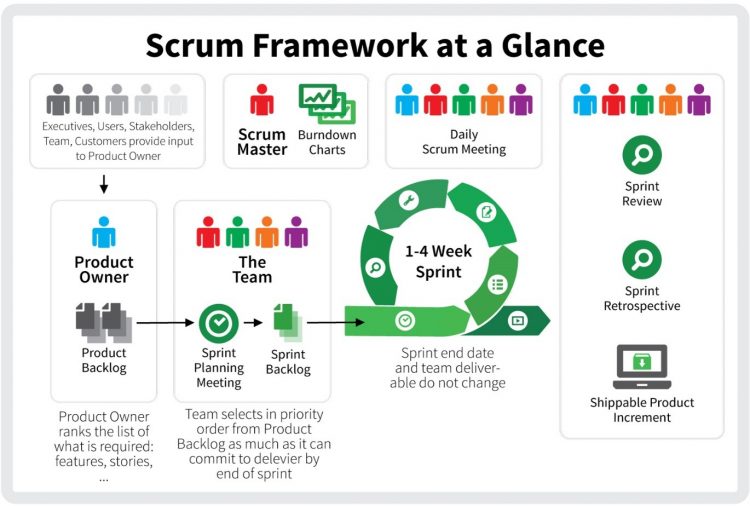Agile Project Management
Published by Pavel Nakonechnyy on (updated: ) .
Definition
Agile is a group of methods and tools that are used when it is impossible to make accurate estimates, stable plans, and predictions. Agile focuses on adaptive, iterative, and evolutionary approach.
Agile manifesto was created in software development sphere, but you can use it elsewhere. Agile principles impact the following part of project management:
- Stakeholder management (and stakeholder engagement a bit)
- Requirements management
- Project delivery and development
- Knowledge management
- Quality management
- Project team organization
Using agile tools and techniques can help you to:
- Organize and plan
- Communicate (within the team and with the rest of your organization)
- Continuously improve the way you work
- Get support from management
Agile Tools and Techniques
Common Agile tools and techniques are:
- Collocation
- Dedicated teams
- Relative estimating
- User stories
- Velocity
- Burndown charts
- Definition of done (DoD)
There is a group of techniques used to optimize project development and delivery, manage project quality and other project constraints:
- Frequent inspection of the product and adaptation to the changes and input during the project
- Aligning development with customer needs and organizational goals
- Colocation of resources to the same work space
- Self-organization and accountability of individuals and teams
Each team should adopt a combination of techniques depending of the project and team itself.
- Becoming a team player
- Elimination of “waste” and “ceremony”
- Empirical demonstration of results
- Customer is always present
- Focus on key planning events: product planning, release/feature planning, iteration planning, sprint review, and stand-ups
Related Articles
86